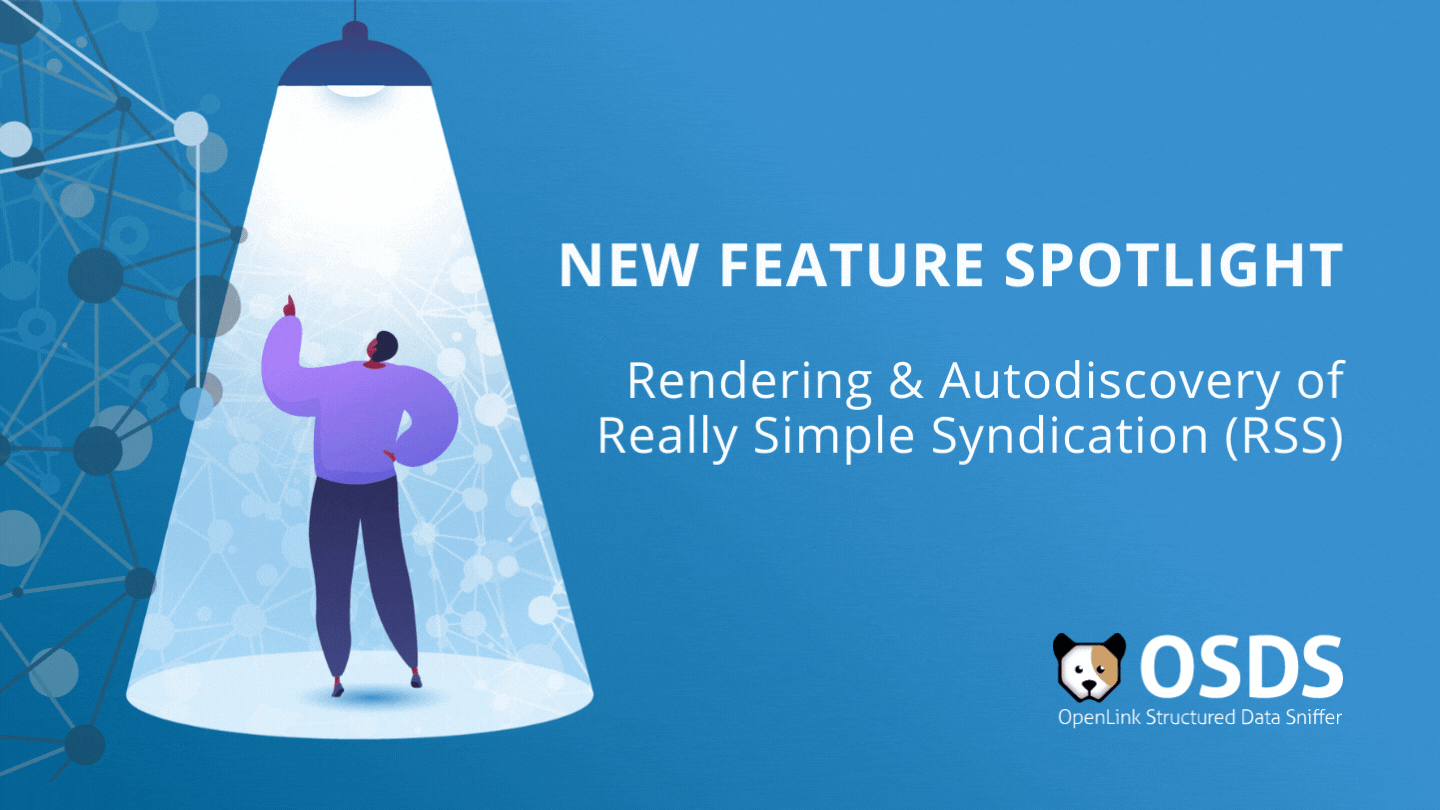
Above is a mini presentation on the new “Really Simple Syndication (RSS)” feature of OpenLink Structured Data Sniffer (OSDS), which provides a productive method for content publication, syndication, and subscription. This presentation covers what RSS is, why it is important, how it is commonly used, and how to use it via OSDS.
Here are a few simple steps to demonstrate RSS discovery, using OSDS:
- Visit a site like http://scripting.com
- Click on the Data Sniffer icon
 in your browser’s tool bar
in your browser’s tool bar - In the RSS tab, click Load RSS data
- Follow a relevant Hyperlink to some content of interest
- Save the exposed RSS content to a data space of your choice, such as your local SolidPod, local or remote filesystem, or a SPARQL-compliant RDF Graph Store
That’s it! All possible via a mouse click — why not have a go?!
Here is an example of OSDS revealing RSS, making the Structured Data discovered thereby available for SPARQL querying, etc. click to explore
Tips and How-Tos
-
Turn Twitter Threads into Knowledge Graphs without writing a single line of code!
-
How to load the DBpedia dataset into a VirtuosoRDBMS instance en route to your own DBpedia Knowledge Graph.
-
Simple guide covering how to set up a Wikidata instance hosted by
OpenLink Virtuoso. -
Simple demo of OSDS SPARQL editor functionality.
-
Why is OpenLink Virtuoso the perfect platform for Social Networking projects?
Pick of the week — DataTwingler Knowledge Graph nuggets
UseCase - EuropeanaEU digital content from museums. SAGE platform leverages use of Linked Data and AI to provide Automatic Enrichments on metadata plus validation functionality.
About Virtuoso
- Virtuoso product page is live on LinkedIn.
- LOD Connectivity License for ODBC and JDBC apps to the LOD Cloud Knowledge Graph
- Exploit the powerful Enterprise Knowledge Graph technology provided by our Virtuoso Platform, by taking advantage of our current collection of Special Offers
- Download Virtuoso for On-Premise installation and use
- OpenLink Virtuoso Pay-As-You-Go (PAGO) from the AWS Cloud
- OpenLink Virtuoso Pay-As-You-Go (PAGO) from the Microsoft Azure Cloud
- Virtuoso 8.3.3319 (PAGO Edition) for the Microsoft Azure Cloud
- Virtuoso 8.3.3319 (BYOL Edition) for the Microsoft Azure Cloud
- Detailed usage guides for Azure
- Azure OpenLink Virtuoso Ubuntu PAGO VM — with FREE 30 Day Evaluation
- Azure OpenLink Virtuoso Ubuntu BYOL VM
About OpenLink Knowledge Graph Productivity Tools
- Free OpenLink Structured Data Sniffer (OSDS) Browser Extension for Google Chrome, Microsoft Edge, Mozilla Firefox, Opera, and Vivaldi (with a build planned for Apple Safari)
- Twingler — A Smart Agent solution for transforming threaded content into Knowledge Graph nuggets, for easy reuse and recall.
About OpenLink Data Access Drivers
- Universal Data Access Drivers — Entry-level offers on high-performance drivers/providers/connectors for ODBC, JDBC, ADO.NET, and OLE DB
- Download Free Trials of our Secure and High-Performance ODBC & JDBC Data Access Drivers (or Connectors) for Oracle, SQL Server, DB2, MySQL, PostgreSQL, Sybase, Informix, Ingres, and 3rd Party ODBC or JDBC Data Sources